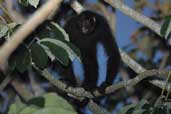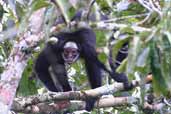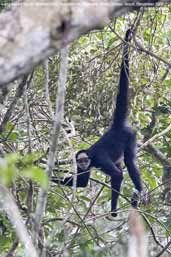(aka White-bellied Spider Monkey, Ateles marginatus, A. chamek)

The taxonomy of Spider Monkeys seems to be quite complicated. Following Emmons, both these photos taken in the state of Mato Grosso are of what she calls White-bellied Spider Monkey Ateles belzebuth, the first photo, taken at Vila Bela de Santíssima Trindade, being of A. b. chamek described as "completely black" while photos 2 and 3, taken at the Cristalino River, are of A. b. marginatus described as "black, with a black belly, white brow patch, and red mask."


A. marginatus is classified as Endangered.
| Previous Page | Back to Index | Next Page |